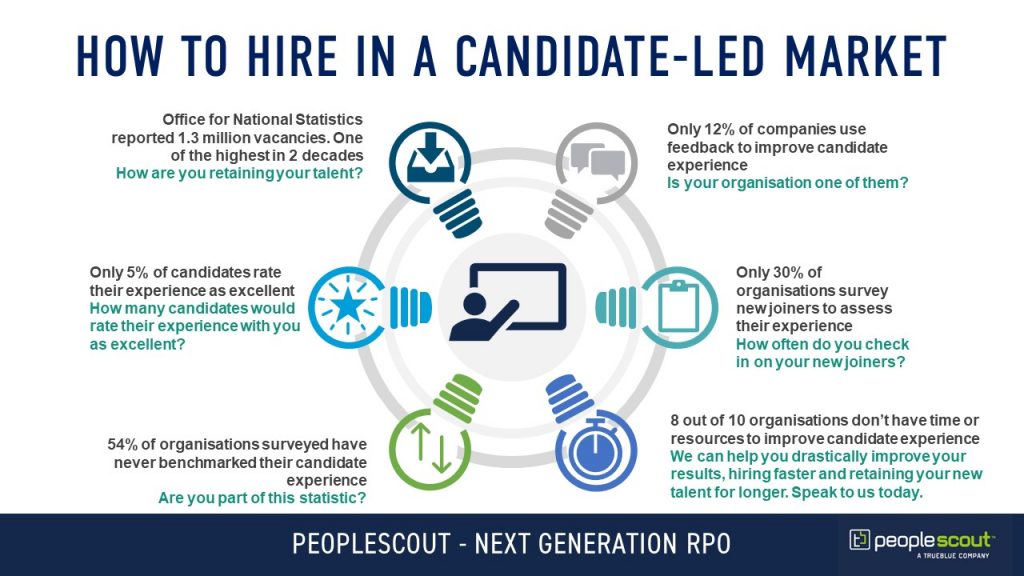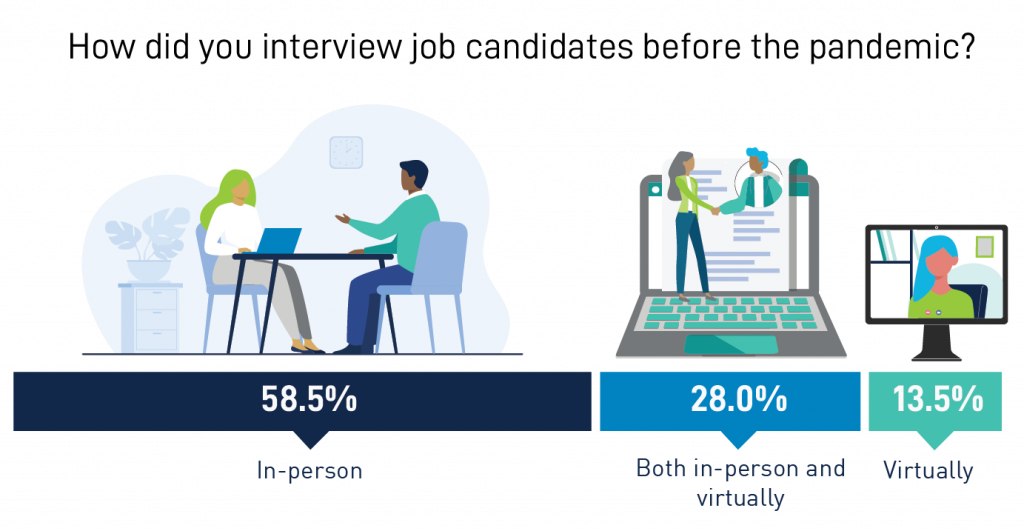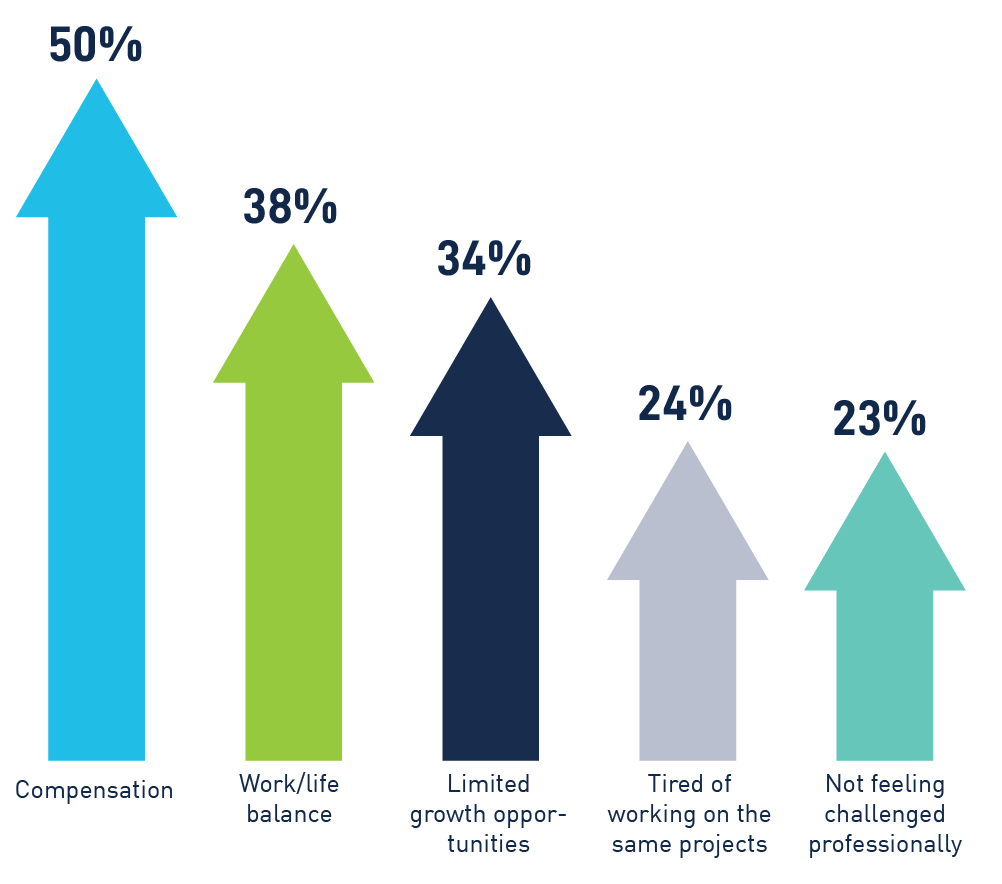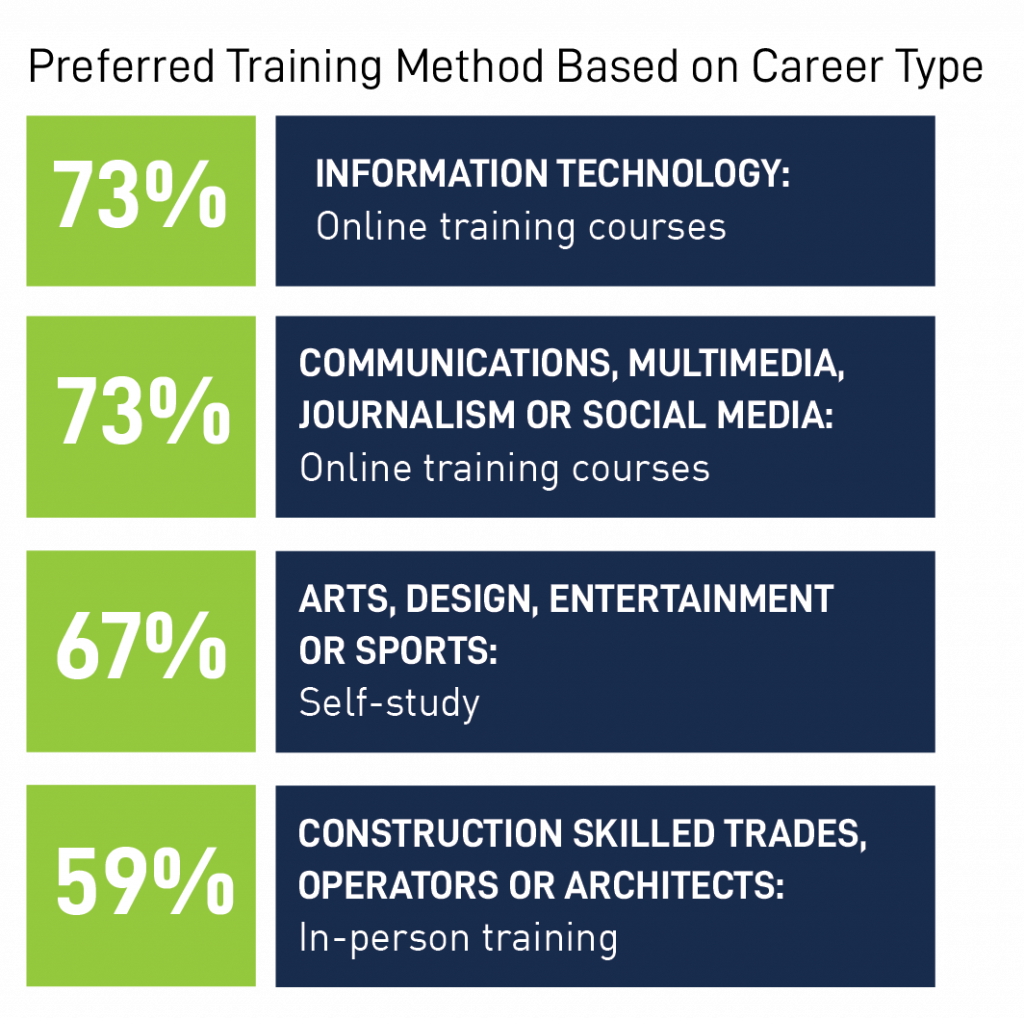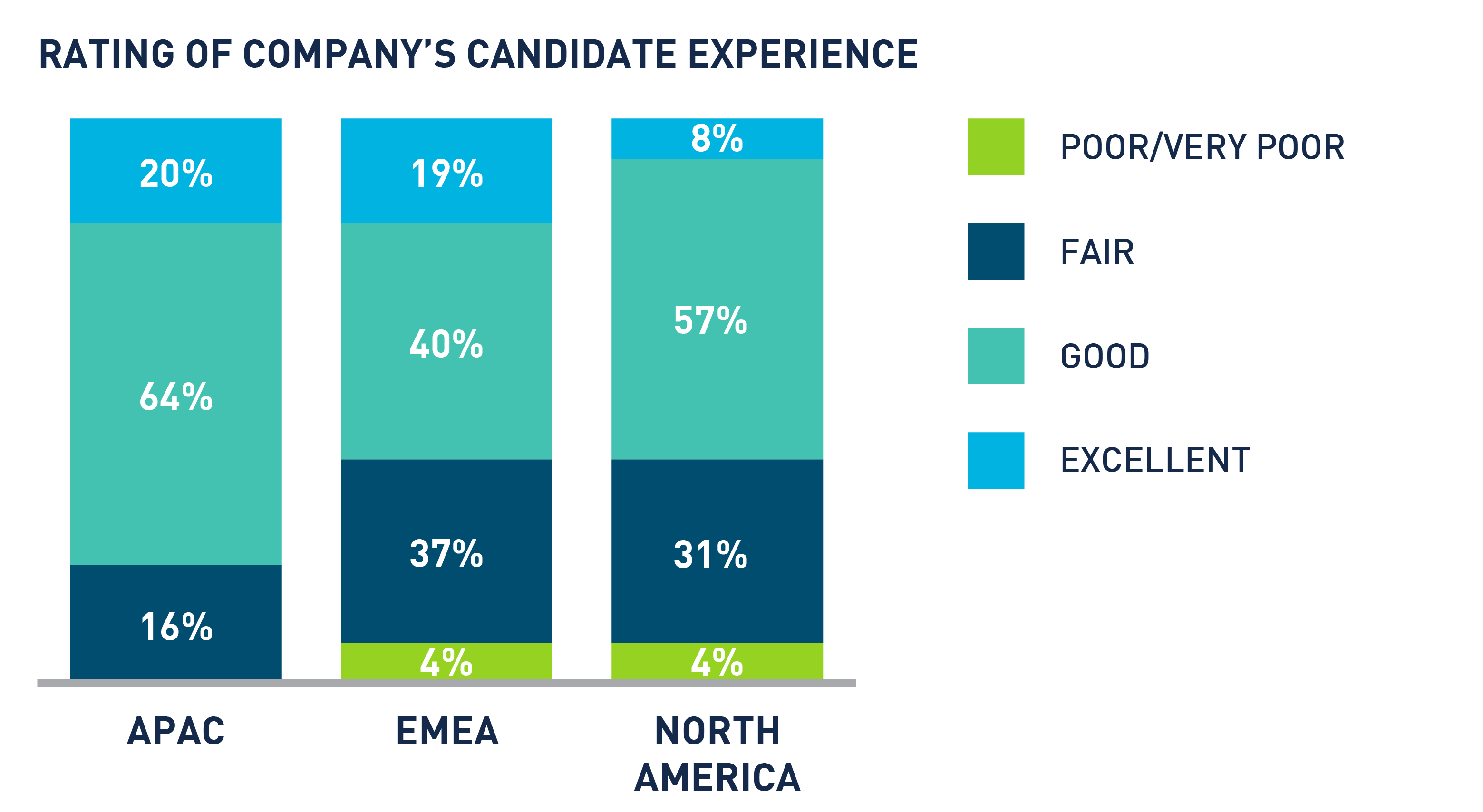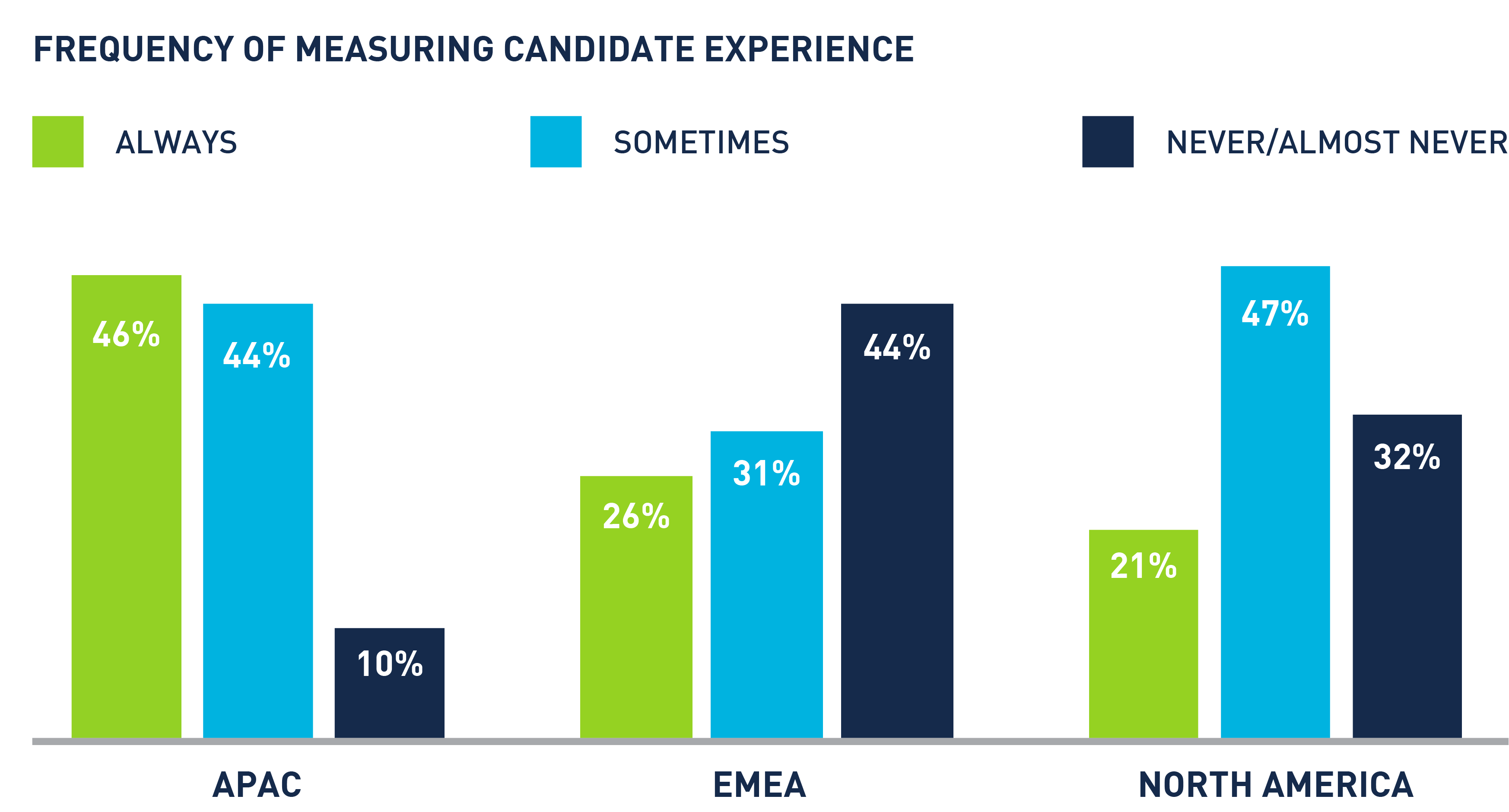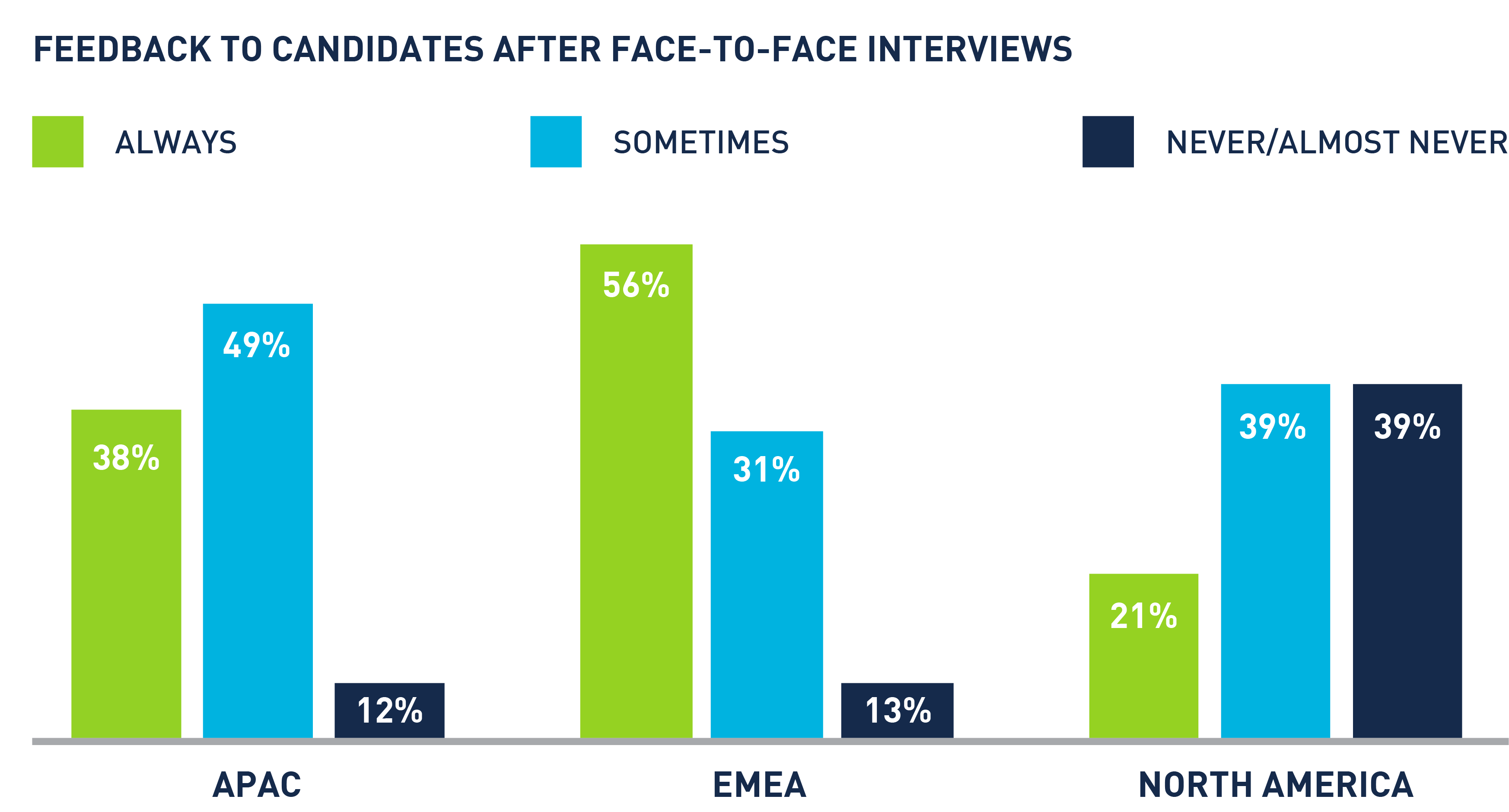Digital transformation has hit HR, and the world of recruitment has rapidly evolved with the growth of mobile apps, big data, artificial intelligence (AI) and analytics. Candidates now expect a tech-enabled recruitment experience, and building a talent acquisition tech stack has gone from a nice-to-have to a critical part of a global recruitment strategy for any enterprise. However, with the influx of new talent acquisition technology—from foundational platforms like an ATS to point solutions for sourcing, interviewing or recruitment marketing—it can be hard to navigate the recruitment technology ecosystem and know where to invest your budget.
In this article, we’ll help you make sense of all the available talent tech and how each recruitment system can benefit your business. You’ll learn some important things to keep in mind as you build your tech stack. Plus, we’ll provide some details on what features to look for as you evaluate solutions.
Working with a Tech Capable RPO Partner
One of the biggest value-adds that RPO brings is experience with the latest talent technology innovations. In fact, in 2021 PeopleScout saw new RPO engagements with technology included increase from 40% to 67%. An RPO partner can help you assess talent acquisition software to address all aspects of your recruiting process, from identifying talent to creating a more efficient candidate experience. Your provider can show you how emerging technologies like AI, machine learning and predictive analytics can boost your ability to attract top talent.
In addition to consulting, some RPO providers are investing in proprietary technology solutions including application tracking systems (ATS), candidate relationship management (CRM) tools, analytics platforms and automation tools. This can come in the form of a single platform or as a set of integrated systems, providing a modular approach that lets you add and remove solutions from your tech stack as your needs change.
Integrate Recruitment Technology for Seamless Operations
Any new recruitment tool you consider should integrate with your current talent acquisition and HR systems. Not only does integration let you benefit from existing investments and grow as your needs change, but it also helps you streamline operations by eliminating the need for manual data entry—saving time and effort.
When evaluating any solution, ask about built in integrations. If one doesn’t exist for one of your existing systems, evaluate the vendor’s ability to support you through an API. An application programming interface, or API, is a connection between pieces of software. Open APIs let you build a custom solution by connecting your talent acquisition technology systems with each other and with your other HR systems—boosting the flow of data and improving operational and cost efficiencies.
A Word on Security
Any technology you do add to your talent tech stack must comply with data privacy regulations in all regions where you’re recruiting. Pay attention to any rules about where data can be stored, like those stipulated by the GDPR. Look for tools that are SOC 2 certified, which shows they maintain a high level of information security.
Building Your Recruitment Tech Stack
Now that we’ve covered some important things to keep in mind when evaluating software, here are some tech solutions to consider when building your talent acquisition tech stack.
Applicant Tracking System (ATS)
An ATS is the foundation upon which you will build your tech stack. This platform acts as the system of record for your talent acquisition programme. As a repository for applicants, it helps you manage the hiring process for all your requisitions and satisfies compliance requirements for record keeping.
Some ATS systems let you create branded career sites and landing pages where candidates can learn more about your company, search jobs openings and even apply for a role. Look for a platform with a “quick apply” feature that lets candidates apply in a few clicks even via mobile devices—which has been proven to increase application conversion rates. ATS platforms may also support the candidate selection process through AI-powered keyword scanning and other automated features like approval workflows, candidate and hiring manager notifications, offer letter generation and more—all with the benefit of reducing time-to-fill and streamlining the candidate experience.
AI Sourcing Tool
AI-powered sourcing tools review, sort and rank talent on the open web using sourcing criteria you’ve previously specified like current or past job titles, companies, diversity attributes, industry experience and more. Algorithms crawl resumes, social media profiles and other sources of data to find candidates that match your job requirements. This increases your potential applicants while speeding up your search and reducing the manual repetitive tasks for recruiters.
AI sourcing can also help reduce bias as it only looks for what you’ve specified and disregards other factors like race, gender or age. It can also be applied to internal candidates by screening the existing employee profiles within an organisation to find strong matches for current open positions.
When designed correctly, AI can help you create a better candidate experience. However, there are dos and don’ts when it comes to automation. Proper testing at each stage coupled with human oversight will go a long way to catching biases or negative hiring experiences, so you can pause and reconfigure your strategy.
Candidate Relationship Management (CRM) Software
Many analysts believe that 70-80% of the recruiting process could be handled by the CRM, so it’s worth looking into complementing your ATS with a candidate relationship management (CRM) system. This recruitment marketing platform helps recruiters create talent pools based on geographies, level of interest and skills. With a CRM, you can differentiate your organisation by nurturing these candidates through automated recruitment emails, SMS messages and more—whether to keep them informed during an active application process or to keep them warm until a suitable position opens up. Communications can be personalised to the candidate for a more engaging experience.
A whopping 89% of candidates think mobile devices play a critical role in the job-hunting process. So, meet your candidates where they are, and look for solutions that are mobile-first and create a consumer-like experience your employer brand deserves. Other features to consider are custom landing pages and careers sites as well as event management tools to support specific recruiting goals.
Recruiting Chatbot
Consider adding a chatbot to your careers site or investing in an ATS that offers this functionality to modernise your candidate experience. As a conversational interface, chatbots leverage natural language processing to screen candidates, answer candidate queries and schedule interviews. Some even offer candidates the ability to check the status of their application. This reduces the burden on recruiters and hiring managers by taking on some frequently asked questions from candidates, freeing them to focus on other things.
In addition to process efficiencies, chatbots can also be a great way to bring your employer brand to life. We implemented a chatbot for The AA, a UK-based motoring association offering roadside breakdown assistance, as part of their reimagined careers site. Candidates could ask AAbot questions and were served with information tailored to their interests. Not satisfied with a run-of-the-mill experience, we gave AAbot a big personality, reflecting the organisation’s playful employer brand. As a result, we boosted career site traffic by 60% year-over-year and applications by 275%. We even used AAbot in recruitment marketing campaigns and social media posts.
Virtual Interview Management System
A Gartner HR Survey revealed that 86% of organisations conducted virtual interviews during the course of the coronavirus pandemic, and this isn’t likely to decline as businesses recover. A dedicated virtual hiring solution can help you quickly hire the essential talent you need, no matter where they live or how the demand for remote working changes.
Modern candidates expect a hiring experience to be personal, quick and convenient. Rather than just leverage video meeting tools, look for dedicated virtual interview tools that offer multiple options for virtual interviews, including on-demand phone interviews, text interviews as well as live and pre-recorded video interviews. Additional features, like self-scheduling tools and automated candidate advancement tools, help dramatically reduce time-to-hire and enhance the candidate experience.
Virtual Assessment Tool
Speed up the candidate review process by investing in virtual pre-employment assessment tools. Modern options include AI that can evaluate writing samples, phone and video interviews and skills test responses. Digital assessment solutions examine the candidate’s aptitude, personality and skills using predictive analytics and machine learning, ensuring you hire the highest quality talent. This also has the added benefit of reducing bias, as the AI focuses on the content of the responses not the candidate or what they look like.
Platforms range from those providing code evaluations for software development roles to language aptitude tests. Make sure you look at the assessment experience from both the candidate and hiring manager experience before committing to a tool.
Recruitment Analytics
With data flowing across your integrated systems, investing in a recruitment analytics platform offers you a single source of truth for understanding your end-to-end recruitment process. Whether you’re hoping to track time-to-fill, DE&I efforts or overall talent acquisition performance, these tools will satisfy your C-suite’s hunger for insights into your recruitment programme.
Look for a tool with interactive dashboards that make it easy to visually monitor trends and slice and dice the data to identify areas of opportunity—and gain the full value of your recruitment data. Modern analytics tools leverage artificial intelligence and machine learning to highlight insights, anomalies and predictions so you have the data you need to drive informed decisions.
New analytics advancements mean cutting edge tools can now provide the ability to query your data via natural language processing. For example, our Ask Affinix feature, powered by Amazon’s QuickSight Q, lets you ask questions of your data in plain language and receive accurate answers with relevant visualisations in seconds.
Onboarding Tool
The new employee onboarding process is an essential element of creating a positive employee experience. Not only should it get new hires up-to-speed on your company and their role, there’s also crucial paperwork steps for payroll, taxes, benefits and more. Consider implementing an onboarding software to automate and support the onboarding process—especially if you’re doing a lot of remote hiring. Checklist features guide your candidates and hiring managers through the first days on the job, so they don’t miss any important steps. Self-service tools let new hires work through all those first tasks and training modules at their own pace. They won’t miss any crucial policies or compliance training, and you’ll have a record of when they completed it in the event of an audit.
Look for tools that let your new hires upload documents online like signed employment contracts, tax forms and right-to-work documents to speed up your payroll procedures. It’s also imperative that this integrates with your ATS and HRIS platforms to keep your employment records up-to-date and eliminate any manual steps which are prone to human error.
Internal Mobility Software
It’s no secret how important career pathing and development are for retaining employees and saving on sourcing costs. In fact, a study of LinkedIn users showed that employees who were promoted within three years of being hired have a 70% chance of staying with the company and those who made a lateral move have a 62% chance. Meanwhile, those who didn’t make an internal move only have 45% chance of staying.
An internal mobility platform lets you share vacancies internally first and help you identify existing employees who may have the skills and experience to move laterally or vertically into a new role. Look for a tool that offers a seamless experience by letting you post to internal and public job boards and view internal and external candidates together in one place, with internal candidates uniquely identified. The system should feature automation like automated invitation emails to qualified internal candidates to speed up time-to-fill and reduce administrative burden.
Conclusion
The recruitment technology landscape is complicated, with new solutions being added all the time. It can be confusing to plan a talent acquisition tech stack but selecting the right tools can boost access to data and help you create both operational and cost efficiencies. Employers should work with a talent partner who can help them customise a technology ecosystem that meets their needs now and prepares them for what’s next.
Learn more about how technology is transforming recruitment in our ebook, Six Tech Trends Shaping the Talent Landscape.
